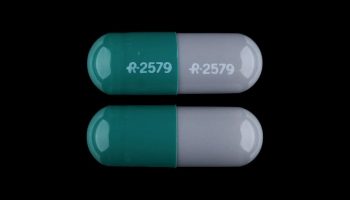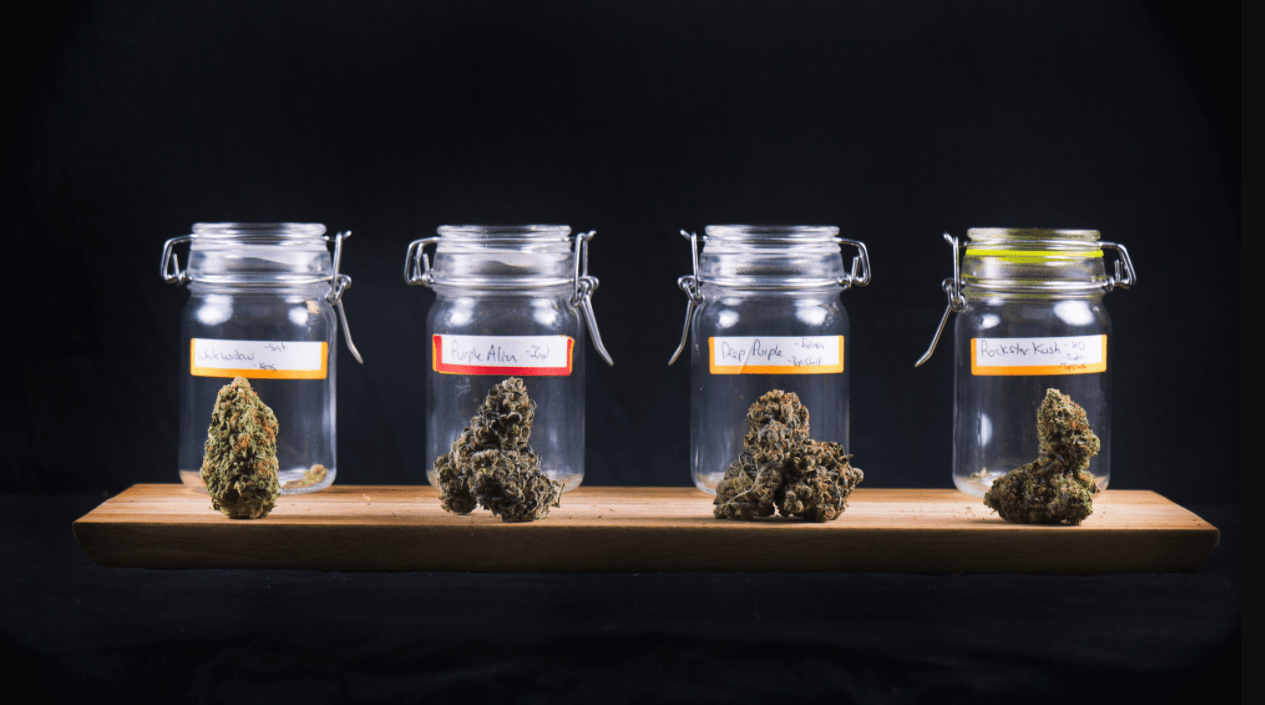In 2019, experts estimated the North American legal marijuana market to have a value of $30.1 billion. That’s already a sizable sum, but they project it to balloon even further by at least 15.5% by 2027. The rising number of US states accepting its legalization is a primary driver to this growth.
After all, more evidence backing up cannabis’ beneficial effects continue to emerge. Scientists associate many of these touted benefits with phytocannabinoids. Tetrahydrocannabinol, or THC, is one such cannabis compound.
THC exists in more than one form, though: delta 8 and delta 9 THC are the two primary ones.
So, what exactly is THC, and how do its main types differ? How do they work, and what kind of effects do they bring? Most importantly, what do scientific studies say about them?
We’ll answer all these questions in this in-depth guide to THC, so be sure to read on!
A Quick Background on Cannabinoids
The term “cannabinoid” refers to any substance that binds with cannabinoid (CB) receptors. CB receptors are cell membrane receptors that interact with the endocannabinoid system (ECS). The ECS is most prevalent in mammals, and yes, that includes us, humans.
The two primary forms of cannabinoids are phytocannabinoids and endocannabinoids. Phytocannabinoids are the cannabinoids found in the cannabis plant. Endocannabinoids are those that occur naturally in the mammalian body.
So far, researchers have discovered and isolated at least 113 phytocannabinoids. Tetrahydrocannabinol is one of the primary ones, as it’s the most abundant. Cannabidiol, or CBD, is another, as it exists in large concentrations, too.
Many of the physiological effects of cannabinoids are due to phytocannabinoids. Keep in mind, though, that cannabis contains over 500 distinct compounds. Aside from phytocannabinoids, it also harbors flavonoids, terpenoids, and omega fatty acids.
What Exactly Is Tetrahydrocannabinol?
Tetrahydrocannabinol is the primary psychoactive constituent of the cannabis plant. It’s the compound responsible for making those who consume marijuana “high.” It’s also why marijuana has been a Schedule I drug under the Controlled Substances Act (CSA) since 1970.
Schedule I drugs are those currently having no accepted medical use in the US. They also exhibit a high potential for abuse, which is why heroin, LSD, and Ecstasy are also part of this list. As marijuana is mind-altering, the Food and Drug Administration (FDA) placed it on the same list.
However, numerous studies have found evidence suggesting THC’s potential therapeutic effects. In fact, two FDA-approved drugs use synthetic THC: Marinos and Syndros (dronabinol). FDA has also approved Cesamet (nabilone), the active ingredient of which is similar to THC.
How Does THC Work?
THC attaches to the two cannabinoid receptors that scientists have so far discovered. These include the CB1 and CB2 receptors.
Researchers found that THC acts as a partial agonist at both receptors. To be an “agonist” means to act like another substance and to stimulate an action. The physiological effects of THC depend on which of these CB receptors it binds to.
The brain, or the central nervous system (CNS), is the primary location of CB1 receptors. Some CB1 receptors are also in the spleen, endocrine gland, and gastrointestinal tract. Scientists have also seen them expressed in the white blood cells and urinary tract.
By contrast, most CB2 receptors are in the immune tissues. Researchers say that the CB2 receptor has modulating effects on immune cell functions.
THC exerts its effects by attaching to and activating either CB1 or CB2 receptors. It’s in this way that it can affect processes like thinking, pleasure, and time perception. It also has an impact on movement, coordination, senses, and memory.
The most well-documented effect of THC is its brain-stimulating activity, though. It triggers brain cells to release the neurotransmitter dopamine. It’s a chemical messenger that plays a massive role in how humans think, plan and feel pleasure.
That’s one way that THC can cause euphoria or the “high” caused by using marijuana. It also seems to be the reason consumers say cannabis helps with their pain conditions. Since THC can induce pleasure, it may help people experiencing pain to feel better, too.
What Then Is Delta-9-THC?
When people talk about tetrahydrocannabinol or THC, they usually refer to delta-9-THC. It also goes by the name delta 9, D-9 THC, or simply D-9. Even the “THC” mentioned in most scientific studies pertains to delta 9.
That’s because the bulk of THC in the cannabis plant takes the form of delta-9-THC.
Read more: Delta 9 THC Alternatives That Are Changing the Medical Landscape
What About Delta-8-THC?
Delta-8-tetrahydrocannabinol, or delta-8-THC, delta 8, D-8 THC, or D-8, is a THC analog.
In chemistry, analogs are compounds, molecules, or substances with significant similarities to another. They may share a likeness in physical or chemical structure or pharmacological effects. Despite the resemblance, though, they still have distinctive qualities.
In the case of delta 8 and delta 9 THC, the primary difference is the placement of their double carbon chains.
What’s This Chain Difference Between Delta 8 and Delta 9?
Both delta 8 and 9 cannabinoids have a double carbon bond in their chemical structure.
In delta-8-THC, the double bond appears on the 8th carbon chain. That’s where the number “8” in its name comes from.
In delta-9-THC, the double carbon bond is on the 9th carbon chain. As you might have guessed, that placement is the reason for the “9” in its name.
Why Does This Chain Difference Between Delta 8 and Delta 9 THC Matter?
As trivial as that carbon chain difference may seem, it affects how psychoactive D-8 and D-9 are. Researchers found that delta 8 only has about 50% to 75% of the psychotropic potency of delta 9. This means that the “high” produced by D-8 THC can be 25% to 50% less than what D-9 THC generates.
What Other Properties Set Delta 8 vs. Delta 9 Apart?
Delta 8 and delta 9 also differ in their concentration in cannabis plants. For example, many popular cannabis strains in Colorado contain up to 28% of delta-9-THC. Delta-8-THC occurs in much lower concentrations, sometimes to the point of being negligible.
That’s also why D-8 THC hasn’t been the subject of extensive scientific studies. By contrast, D-9 THC is the most abundant phytocannabinoid, so many studies on it exist.
Studies have also established the high binding affinity of delta 9 with CB1 receptors. When D-9 THC attaches to CB1 receptors, it causes some tangible alterations to the psyche. Again, this is what makes THC capable of producing a high.
Delta-8 also binds with CB1 receptors but not as strongly as delta 9. Early research found D-8’s binding affinity to CB1 receptors to be three-fold less than D-9. This may be another reason why delta-8-THC is less psychoactive than delta-9-THC.
What Do All These Mean in Layman’s Terms?
You will be in a state of euphoria (AKA “high) regardless of the type of THC you ingest. However, as described by a guide on this site, delta 8 is less intoxicating. Rather than feeling groggy, D-8 consumers say they feel more energized and focused.
Do Delta 8 and Delta 9 Help With Similar Conditions?
It appears so, based on the limited scientific studies done on delta 8. This seems to be a result of the similar chemical structures of the two cannabinoids. Both appear to be helpful for conditions like nausea, vomiting, appetite loss, and pain.
Nausea and Vomiting
FDA approved dronabinol and nabilone for patients undergoing chemotherapy. These drugs serve as a treatment for nausea induced by chemotherapy drugs. However, the FDA only allows their use if other anti-vomiting drugs fail to work on patients.
In any case, the common denominator between these two medications is tetrahydrocannabinol. The THC in these drugs seems to work as an anti-emetic. Anti-emetics, in turn, are substances that can help ease nausea or vomiting.
Considering how delta-8-THC is a THC analog, it may also help with nausea. One study conducted in 1995 on children found evidence that this may indeed be the case.
The eight-month study involved following children with various types of blood cancers. The patients, who were taking anticancer medications, were 3 to 13 years old. The researchers gave them delta 8 treatments two hours before each antineoplastic treatment.
According to the researchers, vomiting was completely prevented throughout the study. They also said that the side effects they observed were “negligible.”
These findings suggest that D-8 THC may also be useful for nausea and vomiting.
Loss of Appetite
Some patients with HIV/AIDS-caused anorexia and weight loss also take dronabinol. This is the main active ingredient in the FDA-approved drugs, Marinol and Syndros. These medications work by triggering the part of the brain that regulates appetite.
Nabilone, which has a structure similar to THC, also works the same way.
In these three drugs, THC acts as an appetite stimulant. As for delta-8-THC, some researchers found that it appears to have similar effects.
For example, a 2004 study involved giving mice either delta 8 or delta 9 treatments. The delta 8-treated mice showed an increased food consumption. The D-8-treated mice also ate more compared to those administered with D-9 THC.
Pain
Chronic pain affects an estimated 11% to 40% of people in the United States. In 2016 alone, approximately 20.4% of US adults experienced chronic pain. That’s on top of the 8% of adults who had high-impact chronic pain.
Chronic pain is also the primary reason people use medical cannabis. About two in three medical marijuana consumers take it for chronic pain.
Delta 9 THC and CBD are two of the phytocannabinoids touted to have positive effects on pain. That’s the reason why it is now popular among individuals who want to reduce pain to buy Delta 9 gummies that contain hemp-derived cannabinoids. Many consumers have reported positive results from using products like these that contain combinations of different phytocannabinoids for more effective symptom relief than going the route of standard painkillers.
There are very few studies citing delta 8 for its potential use in pain conditions. In one study, though, D-8 THC appeared to be helpful for corneal injury pain and inflammation. However, it’s important to note that this study involved mice subjects.
Other researchers say that delta 8 may be helpful for pain by improving the effects of other pain drugs. Like D-9 THC, D-8 THC also seems to have a synergistic relationship with other pain medications. This suggests that delta-8-THC may have a use in pain management and treatment.
What’s the Legal Status of THC in the US?
More than two-thirds of all US states have some law legalizing the use of cannabis.
The use of cannabis is completely legal in 15 states and Washington, District of Columbia. In these places, adults have the right to use medicinal and recreational cannabis. That means they won’t have to worry about the “high” produced by delta 8 or delta 9 THC.
In 20 other states, only medicinal cannabis is legal. This means only adults with a medical cannabis card can buy and use cannabis for health reasons. In these places, the psychoactive effects of THC should only be a “side effect” of using weed as a “treatment.”
However, under the CSA, any cannabis species not considered hemp is still illegal. The same goes for any product derived from non-hemp cannabis plants. Hemp products also need to contain less than 0.3% of D-9 THC on a dry weight basis to be legal.
As for D-8 THC, things are quite blurry since the CSA explicitly names D-9 THC. Moreover, delta 8 can come from both hemp and marijuana. Things get even trickier since the 2018 Farm Bill has legalized hemp-derived products.
For this reason, many D-8 manufacturers say that hemp-derived THC is still cool.
However, the Department of Justice says there are illegal delta-8-THC extraction methods. An example is producing D-8 by means of altering cannabidiol (CBD). In this case, the unlawful practice makes the D-8 THC product illegal in its entirety.
So, make sure you find out where your D-8 products come from for your own safety and protection. Otherwise, you may be breaching some hazy law surrounding delta 8.
Only Use Lawfully-Sourced and Legal THC
As you can see, delta 8 and delta 9 THC are almost similar except for their psychoactive potency. As such, they may bring the same positive effects on nausea, appetite loss, or pain. However, as delta-8-THC is less “intoxicating,” it may be more helpful for those with a low D-9 tolerance.
Either way, make sure that you only use legal THC-containing products. Always check your cannabis state laws, too, as these rules keep changing.
Ready for more educational health-related guides like this? Be sure to stick around to check out our other informative news and blog posts!
Read Also:




























